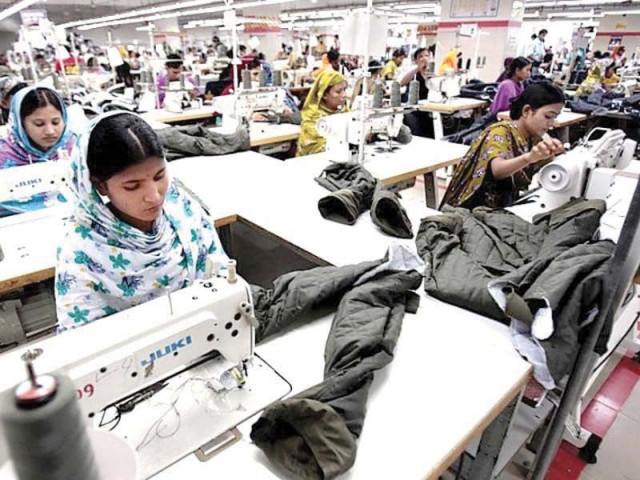SBP unveils fourth strategic plan
Targets financial stability, sustainable growth through navigating challenges

The State Bank of Pakistan (SBP) on Friday launched its fourth five-year strategic plan titled “SBP Vision 2028”, aimed at ensuring financial stability and sustainable economic growth through navigating new challenges and capitalising on opportunities including climate change, rapid digital innovations, disruptions and cyber security threats.
The strategic plan covering the period 2023-28 revolves around six goals. These include keeping inflation within the medium-term target range; enhancing efficiency, effectiveness, fairness and stability of the financial system; promoting inclusive and sustainable access to financial services; transforming to a Shariah-compliant banking system; building an innovative and inclusive digital financial services ecosystem; and transforming the SBP into a hi-tech, people-centric organisation.
These strategic goals are built to cover five cross-cutting themes – strategic communication, climate change, technological innovation, diversity and inclusion, and productivity and competitiveness.
In his message in the comprehensive plan, SBP Governor Jameel Ahmed said the central bank’s first and foremost focus under the vision would be on achieving and maintaining price stability.
“This entails bringing down and maintaining inflation within its medium-term target range of 5% to 7%, which we believe is essential to achieve sustainable economic growth, alleviate poverty and enhance economic wellbeing of our people.” A strong and resilient financial system is pivotal for macroeconomic stability and sustainable economic growth, “thus ensuring the financial system stability remains a key priority area of the SBP Vision 2028.”
The plan says the domestic banking system has shown great resilience against several shocks in the past. “However, the shocks are getting increasingly complex, with climate change, technological advancements, cyber security threats, and financial innovations adding new dimensions in the risks to financial stability.”
The vision envisages enhancing the banks’ capacity to better manage all such shocks. It calls for enhancing the bank accounts coverage to 75% of adult population, and increasing the depth, breadth and quality of financial services, particularly for the low-income clientele, SMEs (small and medium enterprises) and farmers.
“The microfinance sector has contributed significantly in expanding the outreach of financial services to the low-income segment,” it said.
During the last 10 years, the bank accounts coverage reached over 50% of adult population. The improvement in financial inclusion will remain a key strategic goal during the next five years as well.
Read: Economy showing early signs of improvement: SBP
Similarly, according to the plan, digital technology will be optimally leveraged to improve financial inclusion.
The goal is also to transform the conventional banking system into Shariah-compliant in line with the Federal Shariat Court’s decision.
Besides, digital payments will be made as convenient, efficient and cost effective as cash. The coverage of the instant online payment system – Raast – will be expanded to almost all retail as well as bulk payments, with its P2P, P2M and bulk payment modules. Raast will serve all segments of the economy, including consumers, low-income population, household women, home-based workers, and micro and small enterprises.
“Political volatility has the capacity to disrupt the continuation of economic policies and reforms that are essential to achieve sustainable economic growth. As such, there is a pressing need to develop consensus among political stakeholders to ensure political support for economic reforms,” the five-year plan said.
The macroeconomic outlook hinges on how well inflation expectations are anchored through the recent policy rate increases, and on the path of global commodity prices. External and fiscal balances and all other key macroeconomic indicators are also expected to be affected by the recent policy measures, as well as both immediate and lagged impact of the devastating 2022 floods.
The pace of the ongoing IMF stabilisation programme’s implementation, the ability to raise external financing, continued supply chain disruptions, especially vis-a-vis Russia-Ukraine conflict, and domestic political stability in the ensuing election year and beyond, are other important determinants.
In order to prevent recurring episodes of boom-bust cycles in the long run, a host of structural challenges to Pakistan’s economy need to be addressed.
The lack of coherent industrial and agricultural policies, and inadequate investment in human development have resulted in stagnant exports, dismally low crop yields, and weak labour productivity, said the plan.
The financial landscape also requires efforts to enhance financial access to the underserved segments of society and encourage private savings to raise the country’s investment-to-GDP ratio.
Published in The Express Tribune, November 18th, 2023.
Like Business on Facebook, follow @TribuneBiz on Twitter to stay informed and join in the conversation.



















COMMENTS
Comments are moderated and generally will be posted if they are on-topic and not abusive.
For more information, please see our Comments FAQ